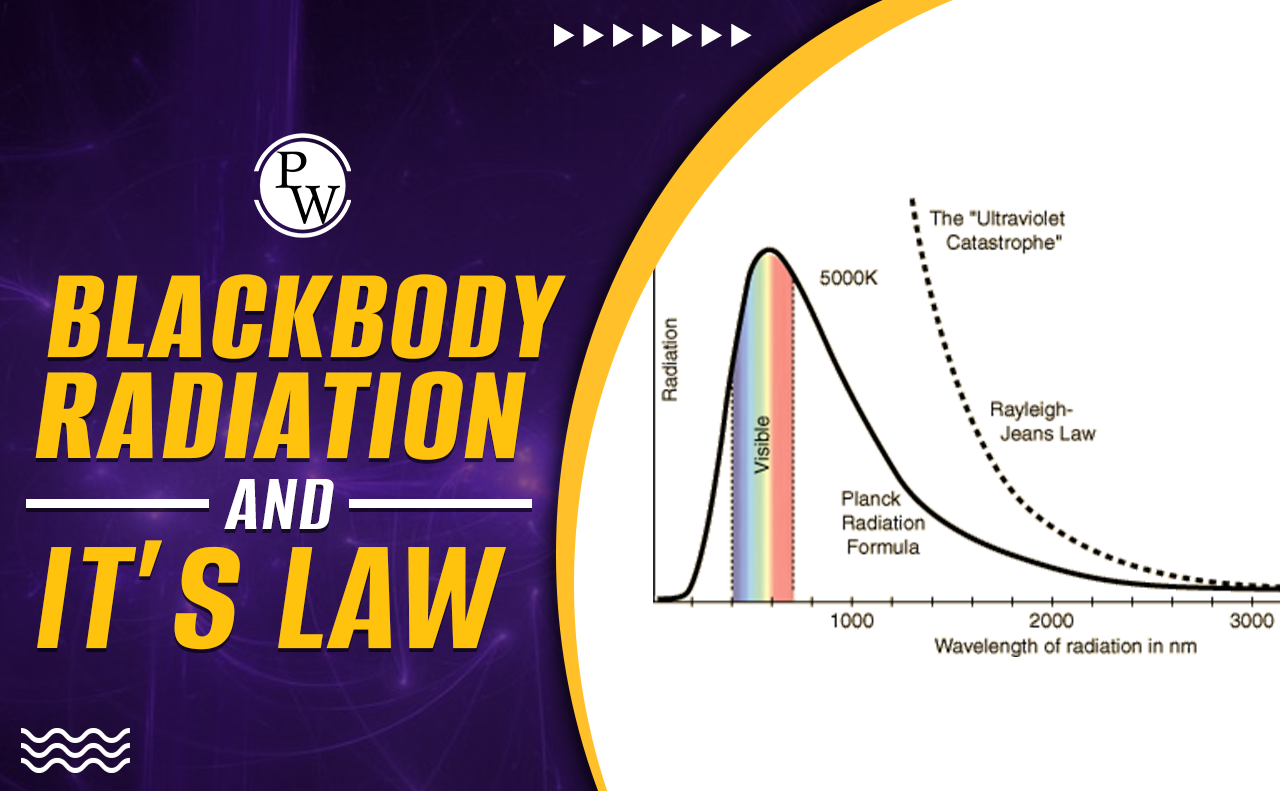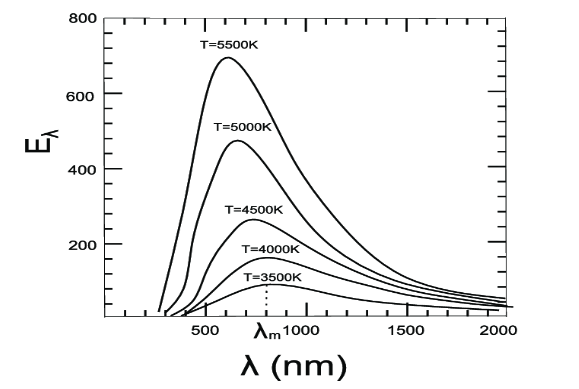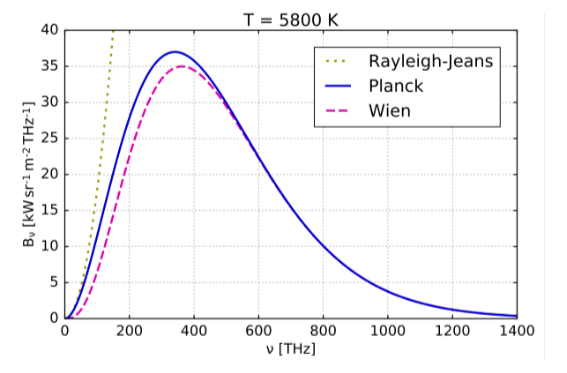

The glow of a hot piece of metal, which gives off visible light and whose color varies with the temperature of the metal, goes from red to yellow to white as it becomes hotter and hotter. There are other frequencies also to which our eyes do not respond. At room temperature, most of the radiation is in the infrared part of the spectrum and hence invisible.
The ability of a body to radiate is closely related to its ability to absorb radiation. A body at constant temperature is in thermal equilibrium with its surroundings and absorbs energy from them at the same rate as it emits energy. An ideal body that absorbs all radiation incident upon it, regardless of frequency. Such a body is called a blackbody.“An ideal blackbody is defined as one that absorbs all electromagnetic radiation incident upon it”. Such a body is also a better radiator of energy for all frequencies as compared to other bodies at the same temperature. An ideal blackbody does not exist. “The nearest approximation is a hollow enclosure having a blackened inner wall and a small hole. Any radiation entering the enclosure through the hole will suffer reflection repeatedly and get absorbed inside. If the enclosure is heated to a certain temperature T, it emits radiation. In thermal equilibrium, this radiation depends only on T. A very small fraction of the radiation will pass out through the hole. Since the hole acts as a blackbody, this radiation is called blackbody radiation at temperature T”.
It is found that the radiated energy is maximum at a particular wavelength m and is small for very short and very long wavelengths. Wein obtained the semi-empirical formula known as Wein’s Law
Wein obtained the semi-empirical formula known as Wein’s Law
 This law satisfies the experimental curve except at long wavelengths. However, it is not derived from the model which would relate the emitted radiation to physical processes taking place within the enclosure.
Rayleigh and Jean's theory was completely based on classical electrodynamics and thermodynamics. They considered the radiating body as a collection of large numbers of charged particles performing linear simple harmonic motions. These oscillating charges emit and absorb electromagnetic radiation. At thermal equilibrium, the energy density of the radiation inside the cavity will be equal to the energy density of the atomic oscillators situated in the walls of the cavity.
The number of oscillations per unit volume of frequency is called Jeans’ number,
This law satisfies the experimental curve except at long wavelengths. However, it is not derived from the model which would relate the emitted radiation to physical processes taking place within the enclosure.
Rayleigh and Jean's theory was completely based on classical electrodynamics and thermodynamics. They considered the radiating body as a collection of large numbers of charged particles performing linear simple harmonic motions. These oscillating charges emit and absorb electromagnetic radiation. At thermal equilibrium, the energy density of the radiation inside the cavity will be equal to the energy density of the atomic oscillators situated in the walls of the cavity.
The number of oscillations per unit volume of frequency is called Jeans’ number,
n( ν ) = 8 πν 2 / c 3
According to the classical theory of equipartition of energy, the average energy of an oscillator at temperature T is kT where k is Boltzmann’s constant. The energy density of the radiation in terms of is,U( ν ,T) = 8 πν 2 / c 3kT or
U( λ ,T) = 8 π/ λ 4kT
This is Rayleigh-Jeans Law.
It is found that the Rayleigh-Jeans Law satisfies the long wavelength region. It diverges as wavelength tends to zero. This failure of the Rayleigh-Jeans Law is referred to as an “Ultraviolet Catastrophe” . The total energy emitted at all temperatures except absolute zero is infinite which is impossible. Planck realized that changes had to be made to explain the spectrum of Blackbody radiation.Planck’s quantum hypothesis:
“The material oscillator can have only discrete energy levels rather than a continuous range of energy as assumed in classical physics. If a particle is oscillating with frequency, its energy can only take values as, ε n = nh ν where n = 1,2,3…… Where h = Planck’s constant, The quantity h is called a quantum of energy. This implies that the particle can emit or absorb electromagnetic energy not continuously but in small amounts in multiple quantum h.h = 6.625 10 -34 Js
The particles oscillating with frequency, at absolute zero all oscillators will be in the lowest energy state. At temperature T, in equilibrium, the number of oscillations with energyε n is given by the Maxwell-Boltzmann function. The energy density of the radiation will be,U( ν ,T) = 8 πν 2 / c 3 h ν/ e h/kT -1 or
U( λ ,T) = 8 π hc/5 λ 1/ e hc/kT -1
This is Planck’s radiation Law.
Planck’s law agrees with the spectral distribution curve for values of and T.- Asλ→0 Planck’s law reduces to Wein’s law
U( λ ,T) ~ 8 π hc/ λ 5 e -hc/kT
- As Planck’s law reduces to Rayleigh-Jeans’ law
U( λ ,T) ~ = 8 π kT/ λ 4

Wien's Displacement Law
Wien’s law or Wien’s displacement law, named after Wilhelm Wien, was derived in the year 1893 which states that black body radiation has different peaks of temperature at wavelengths that are inversely proportional to temperatures. λ m T = constantStefan-Boltzmann law
Stefan-Boltzmann law states that the total radiant heat power emitted from a surface is proportional to the fourth power of its absolute temperature. U < T 4











